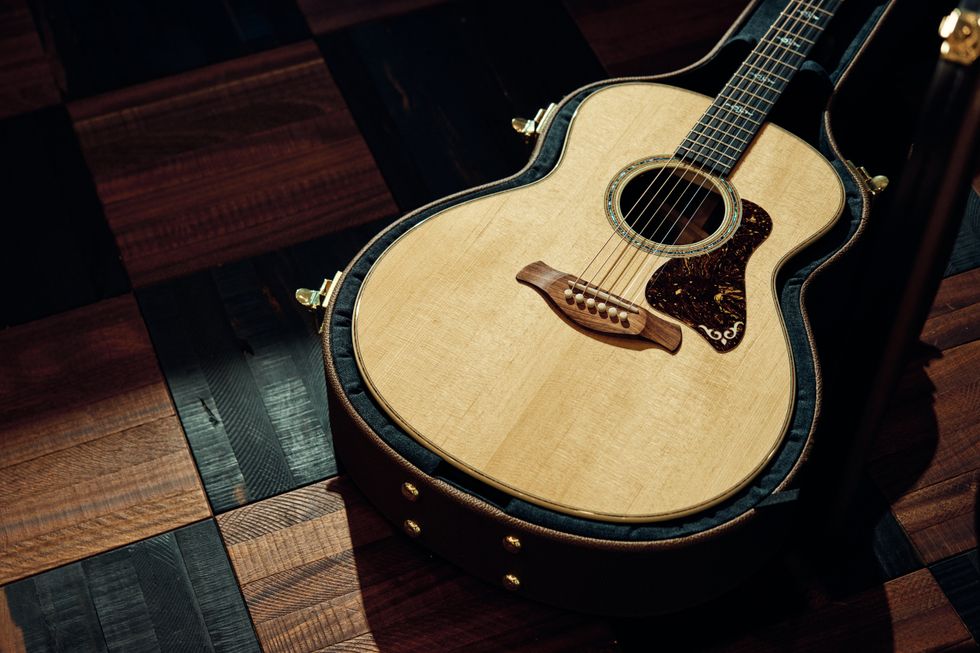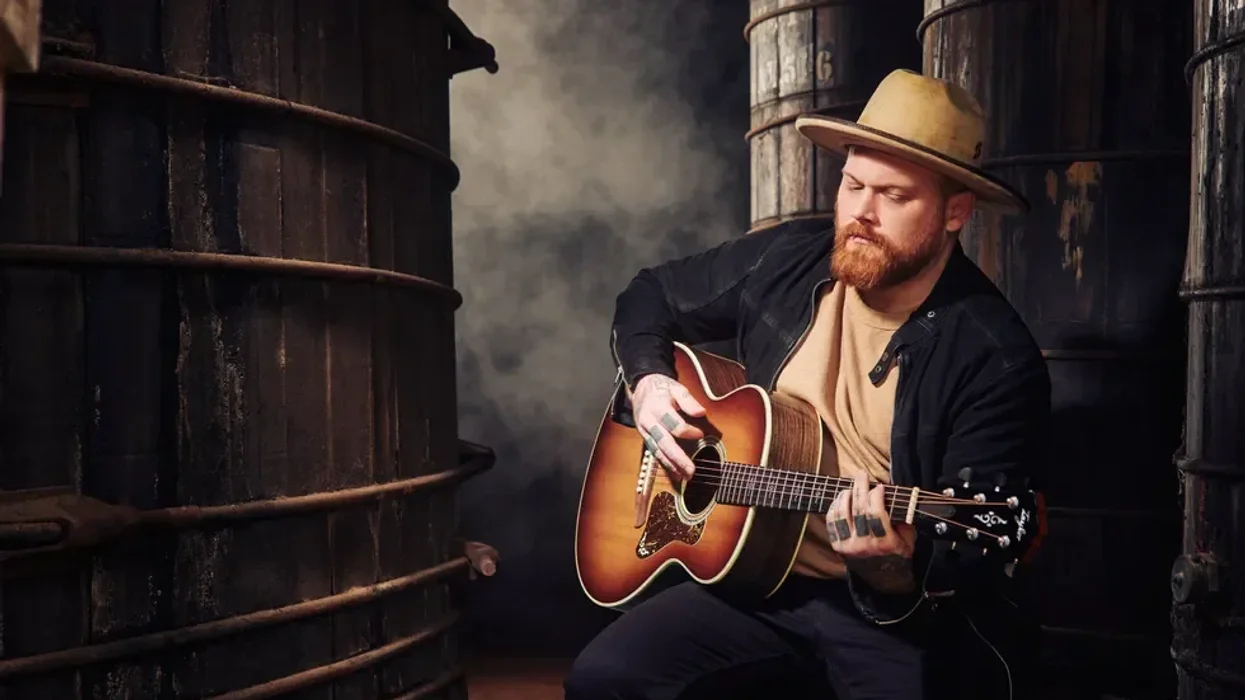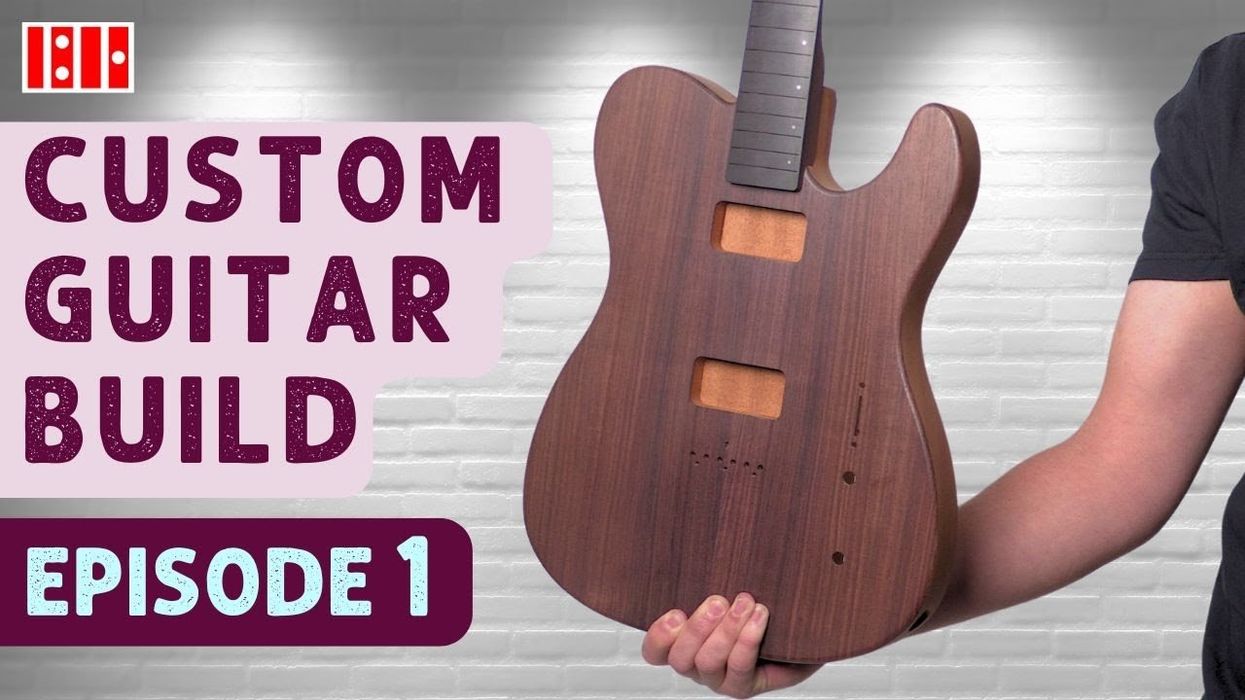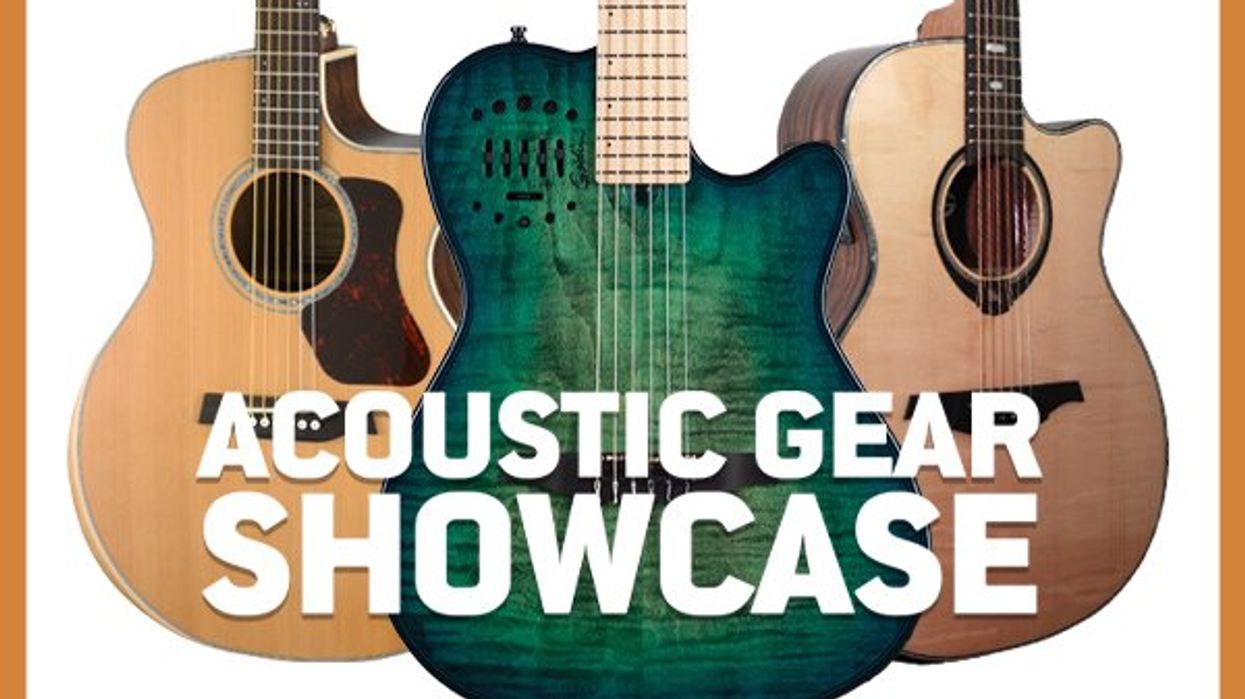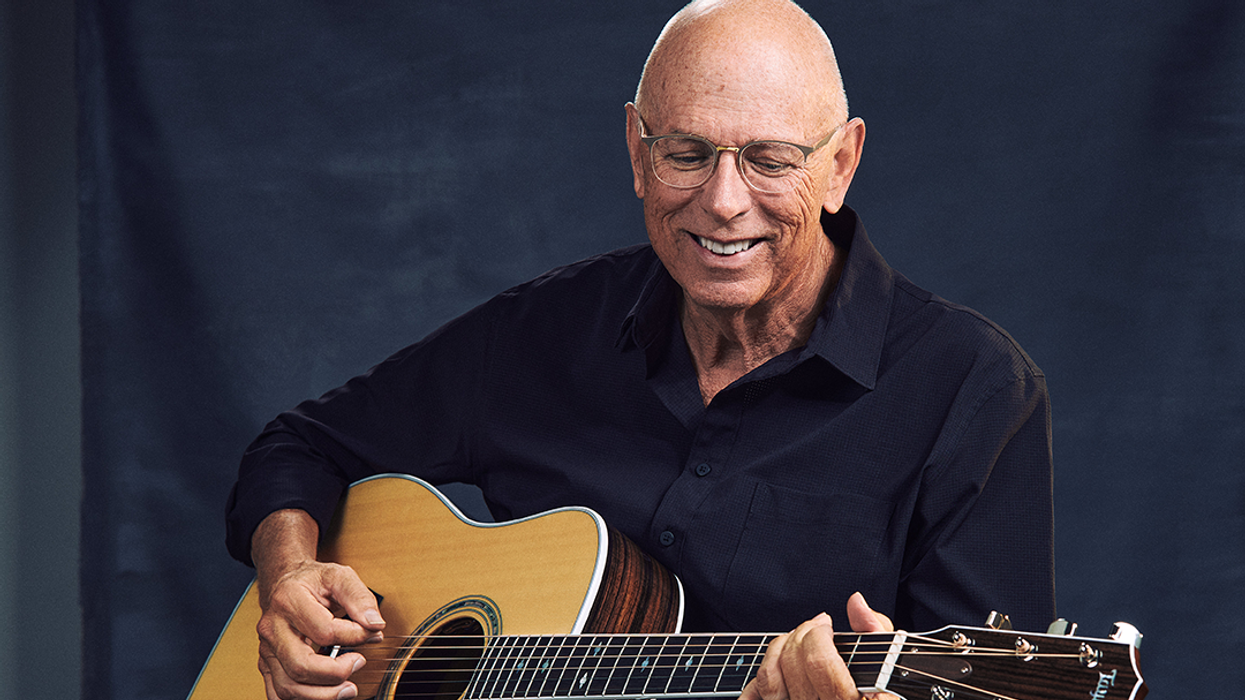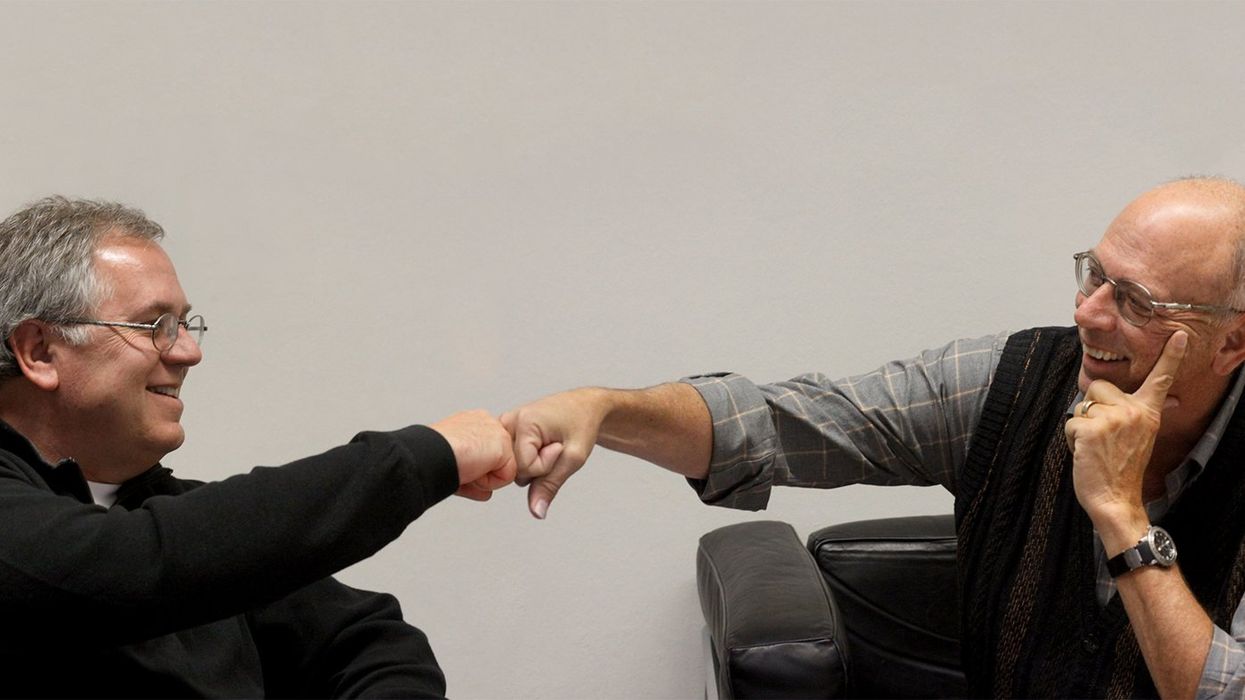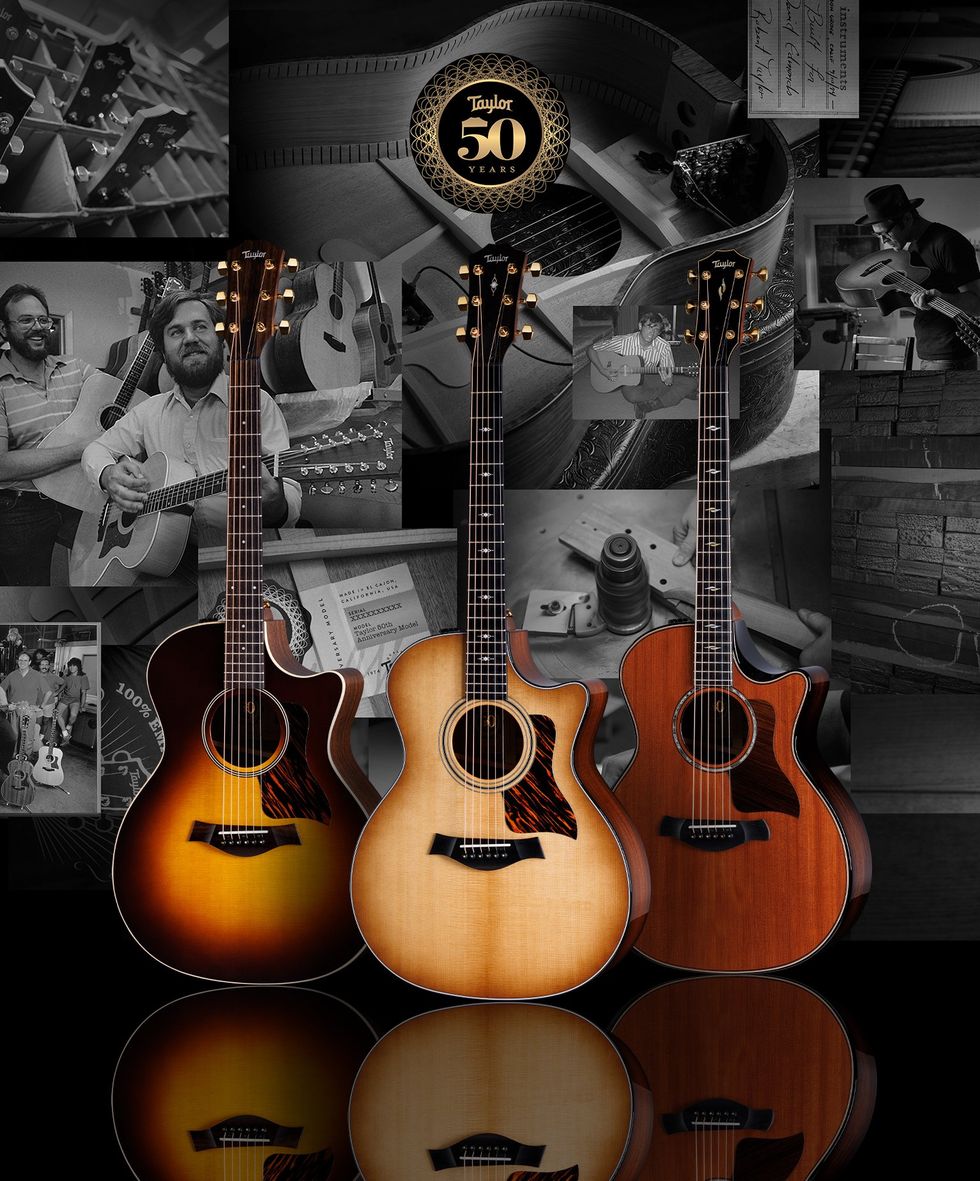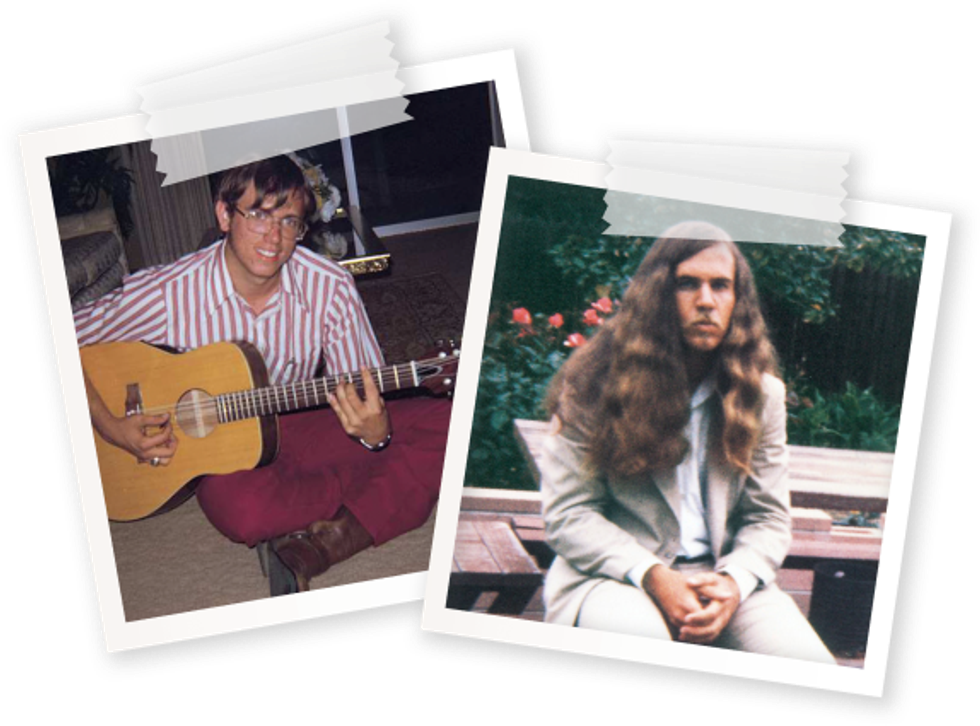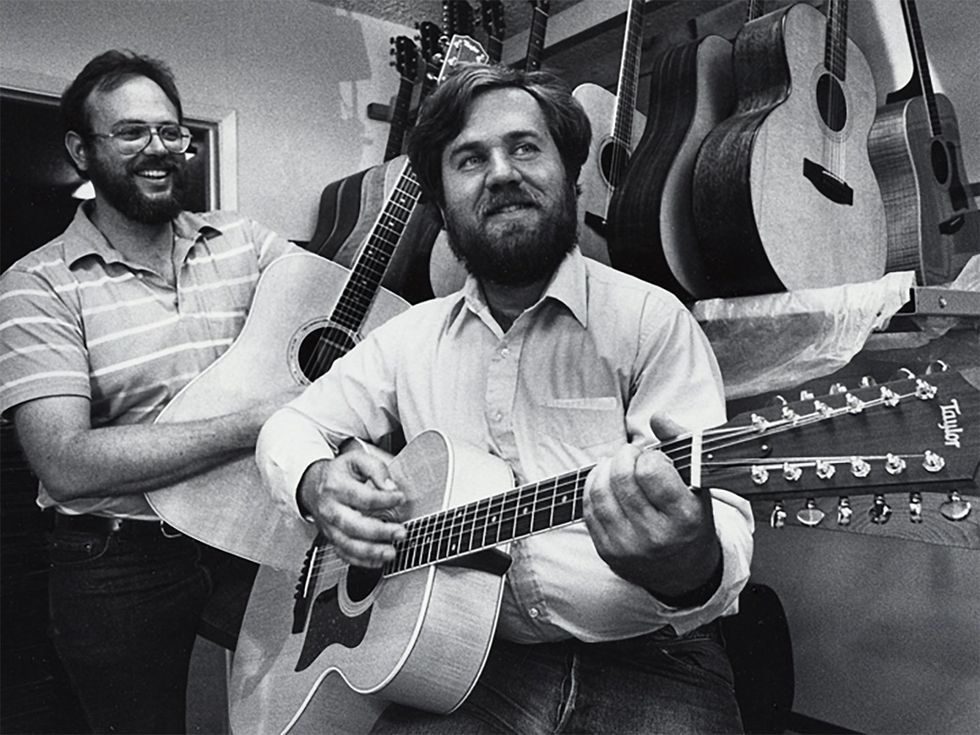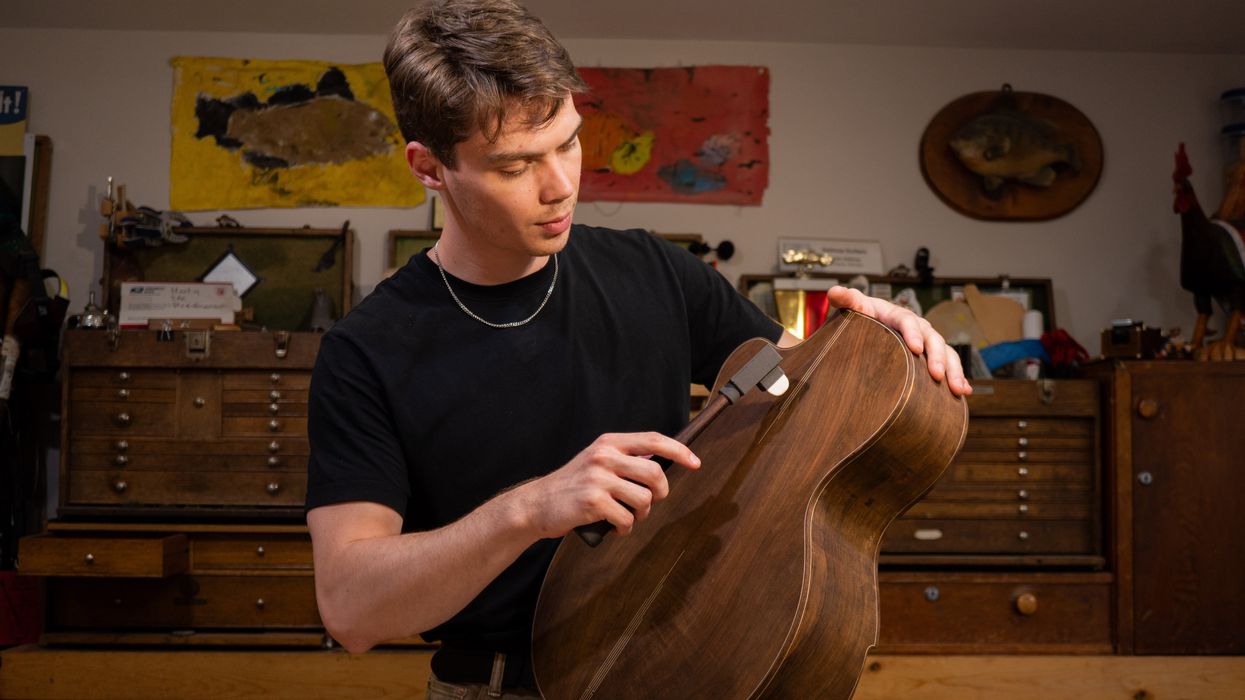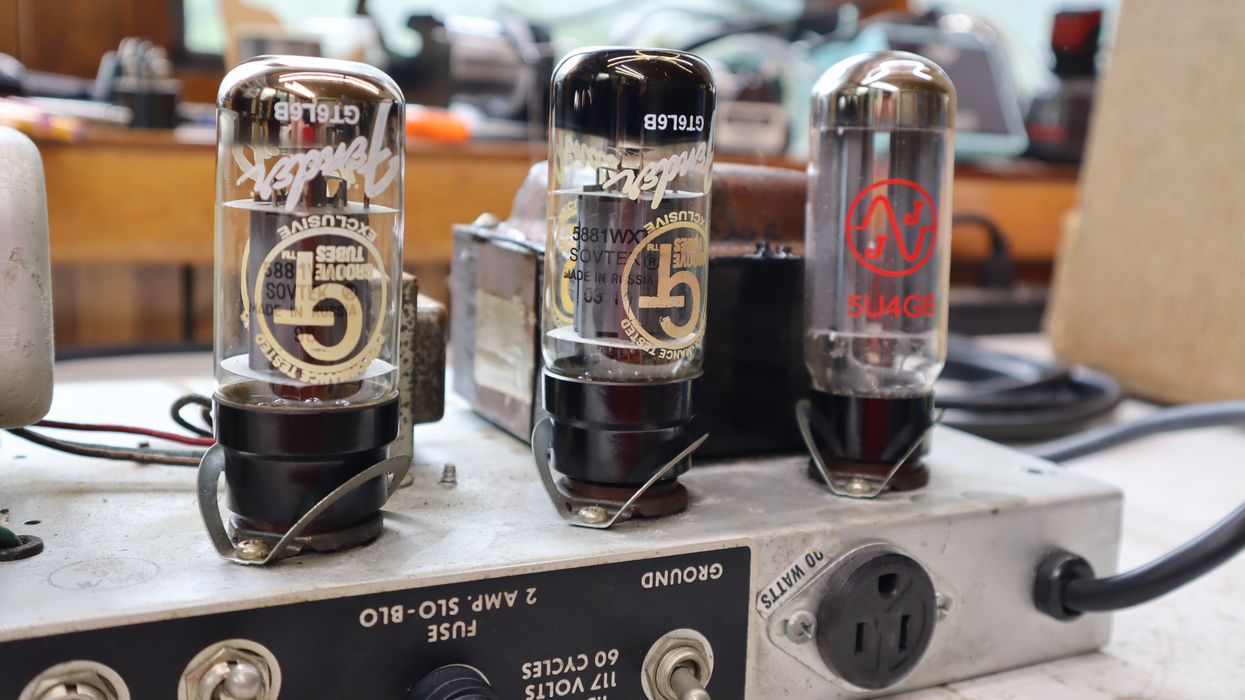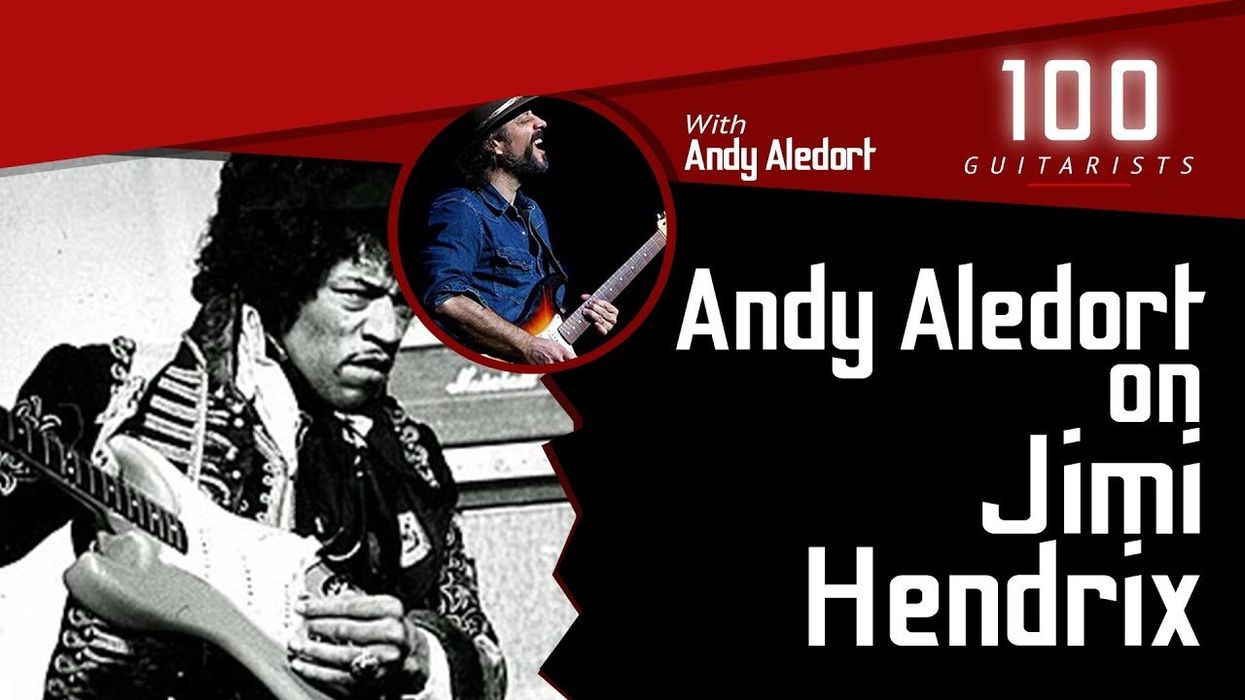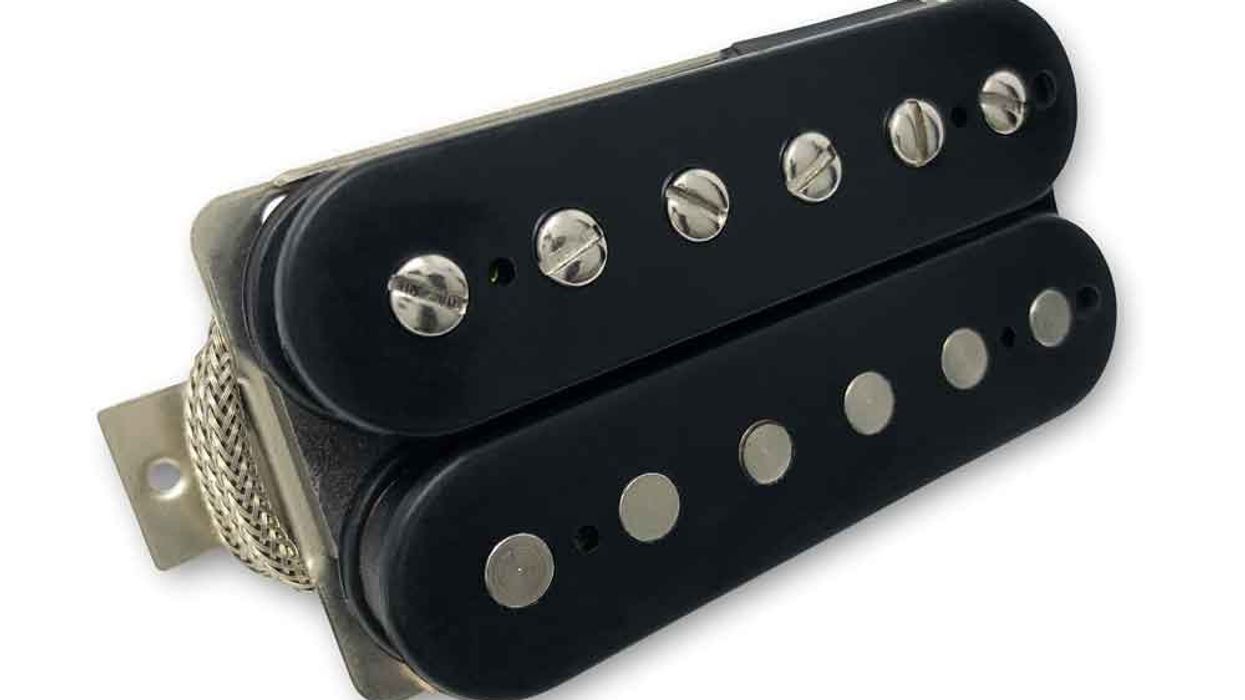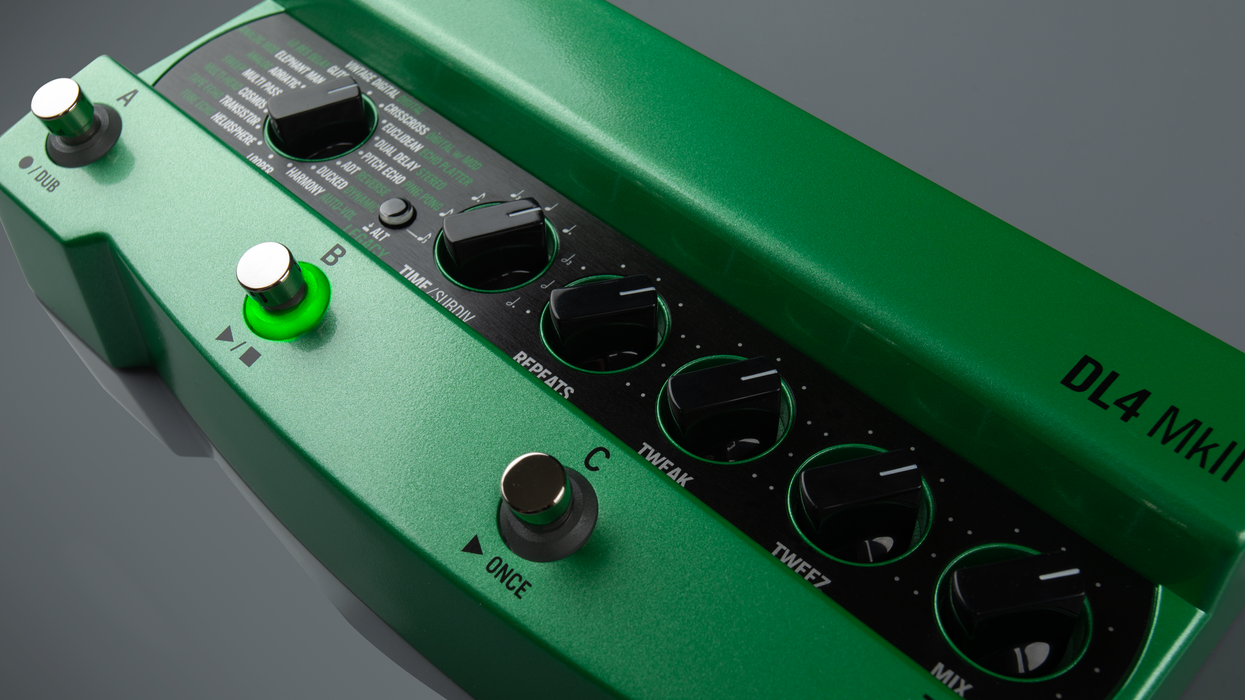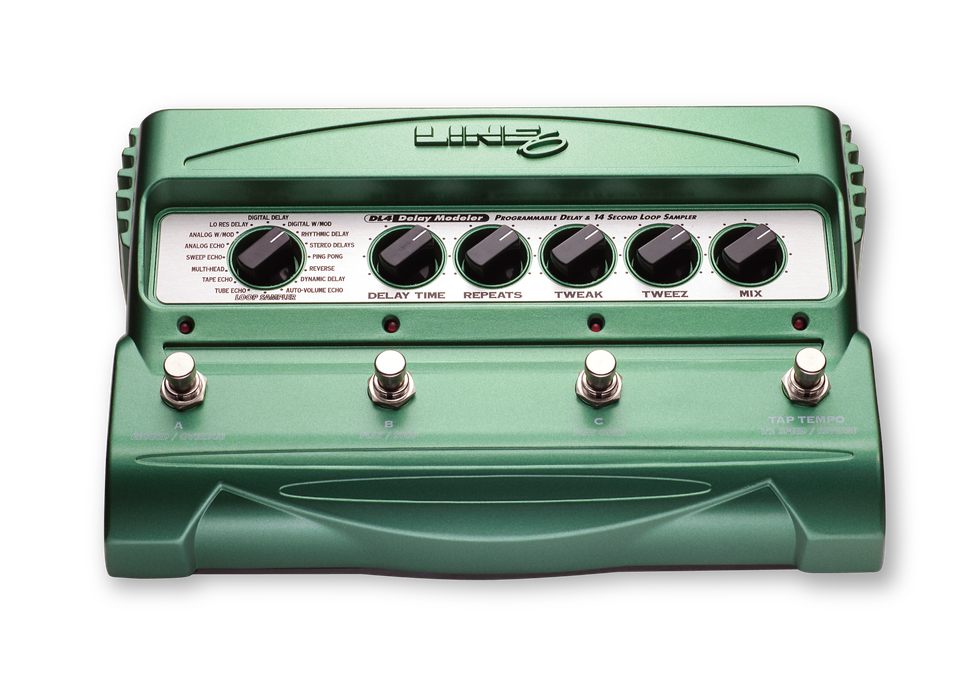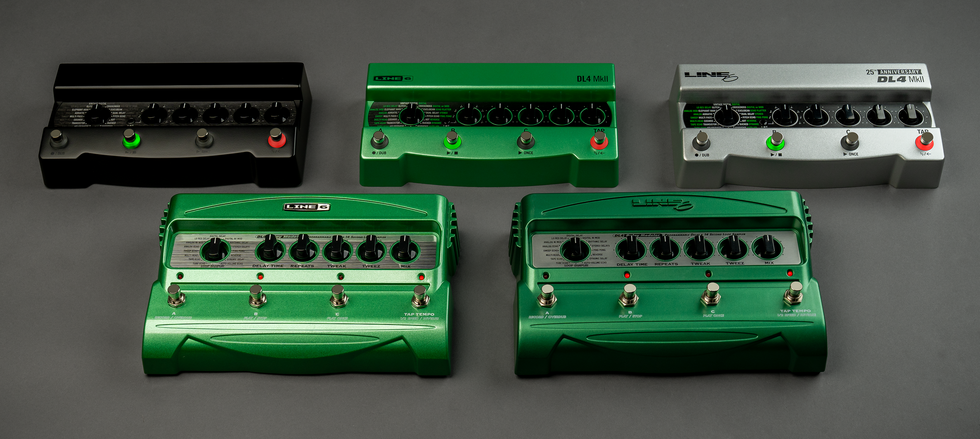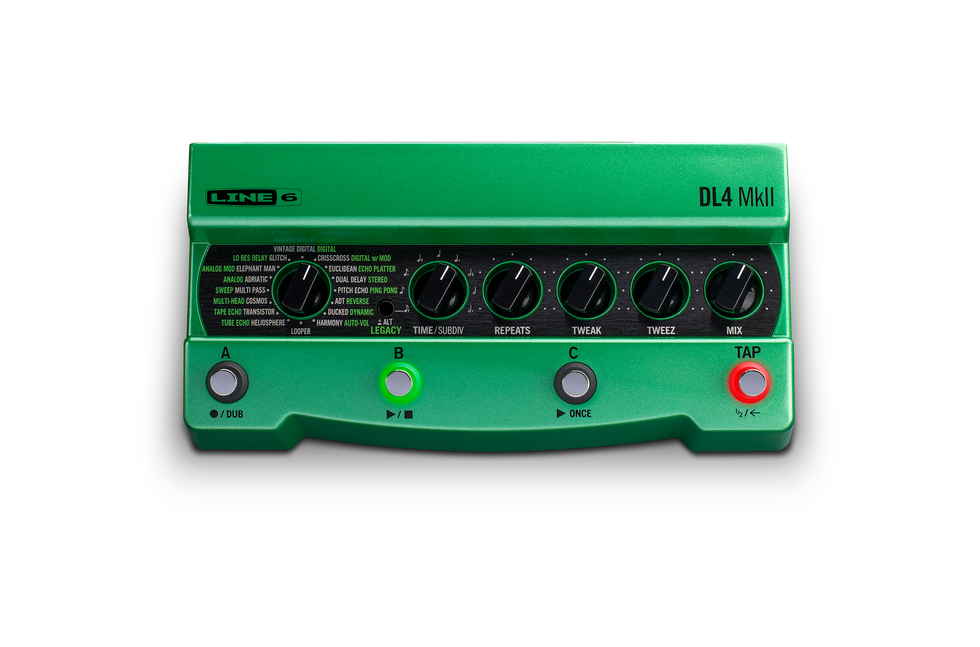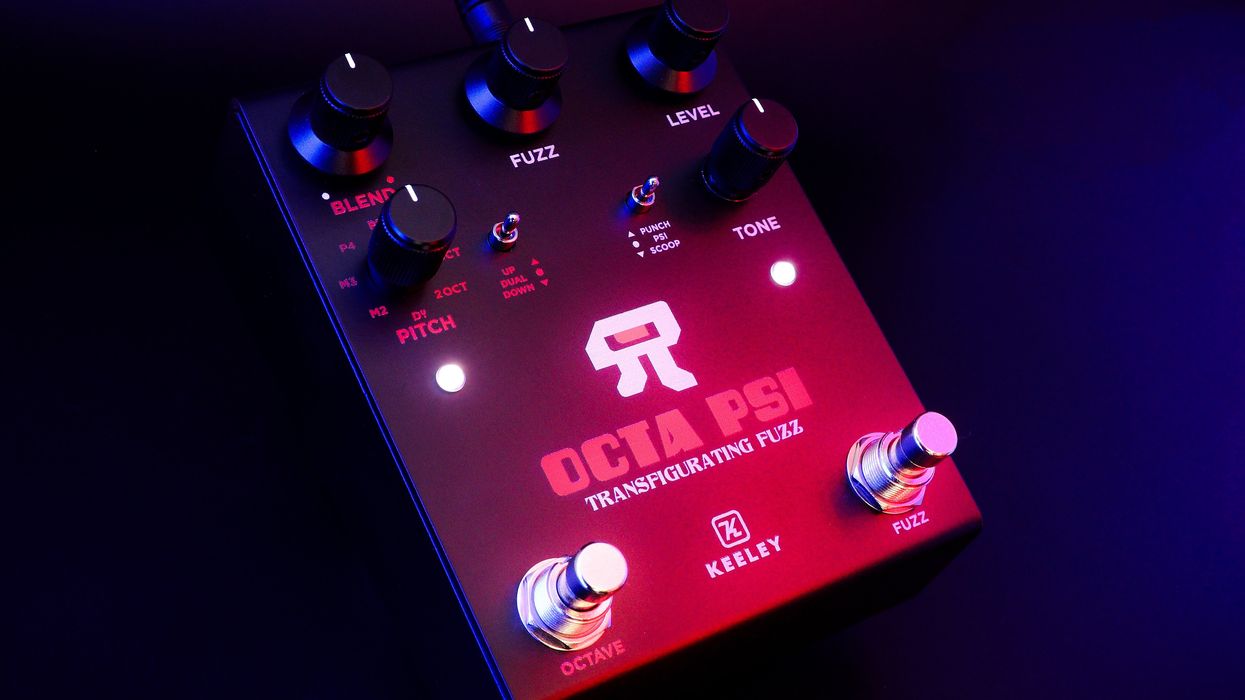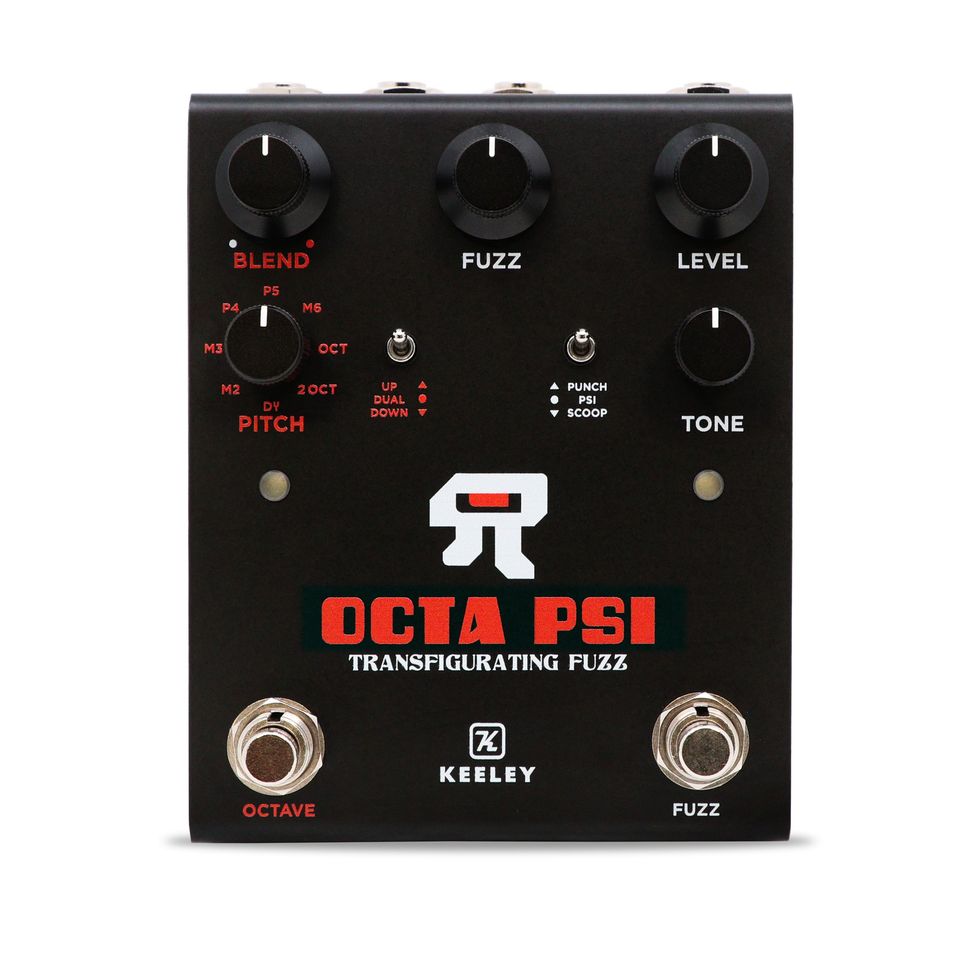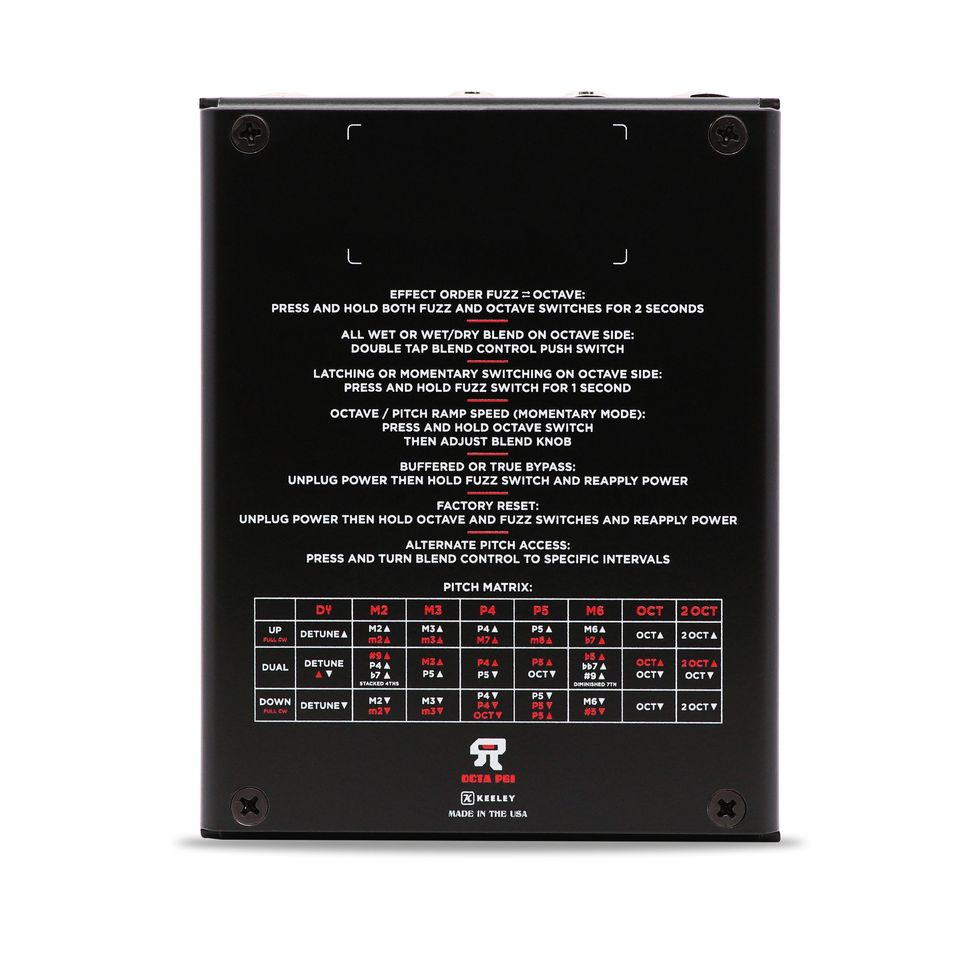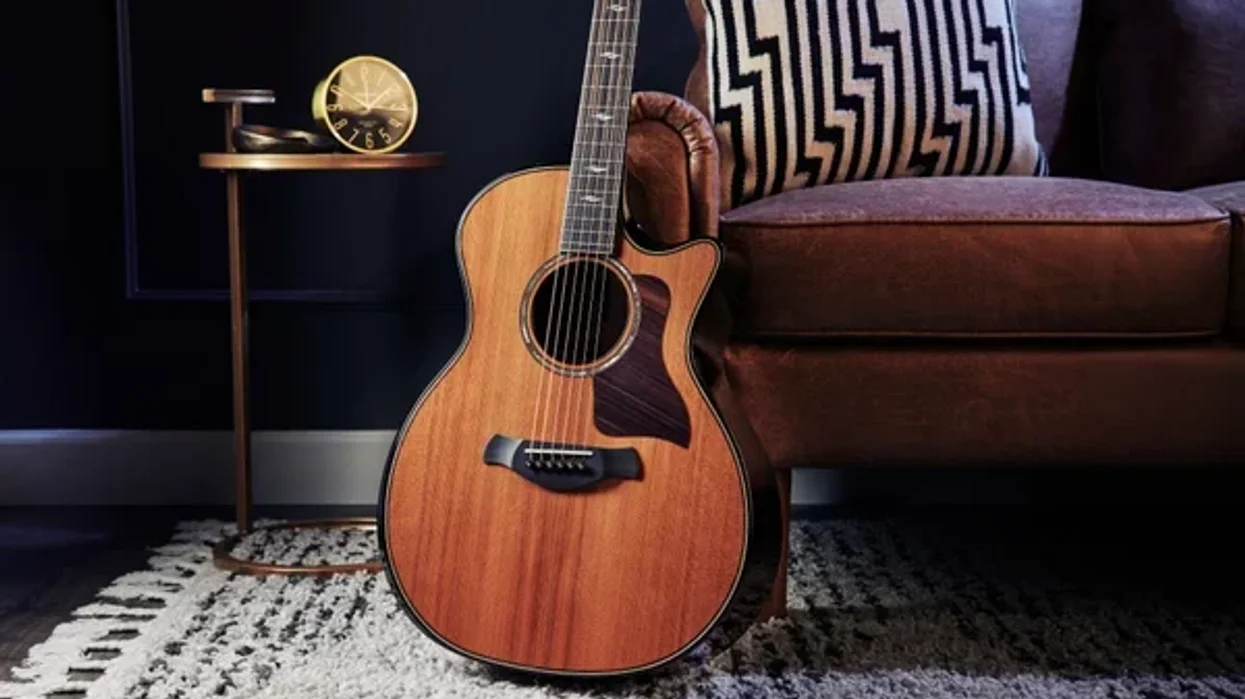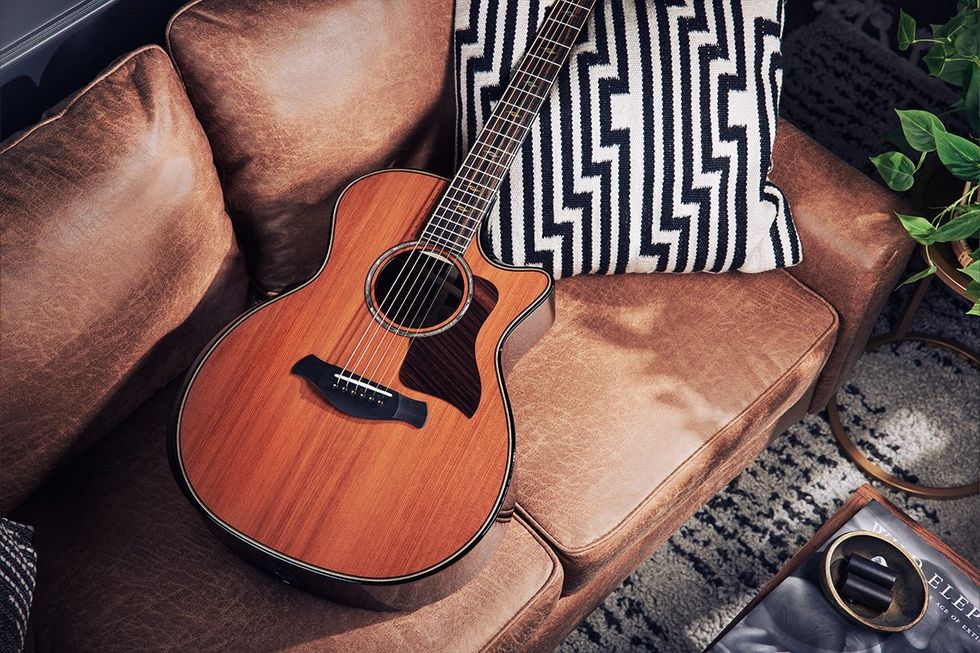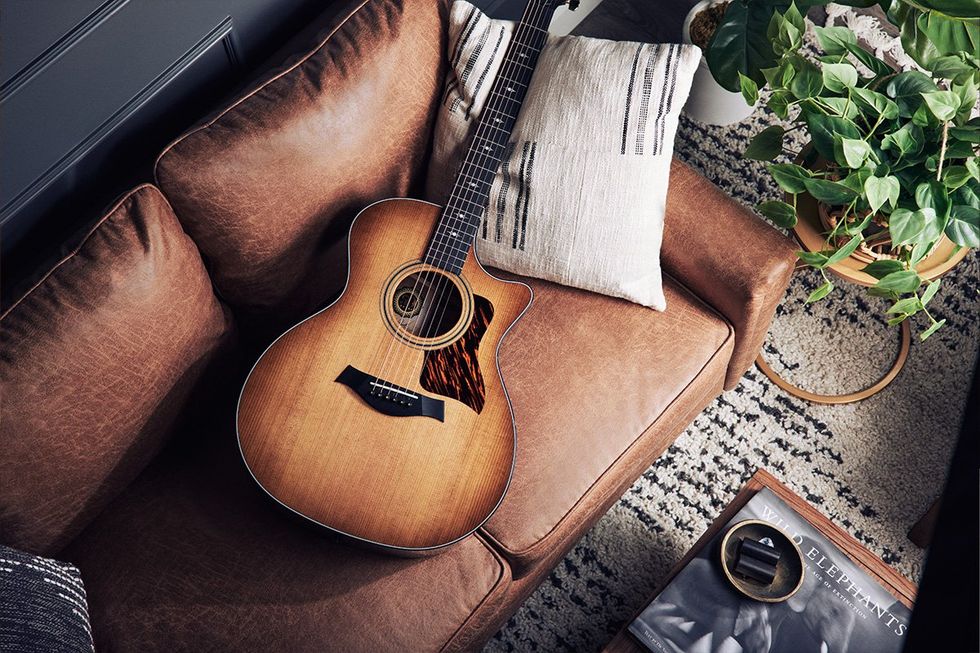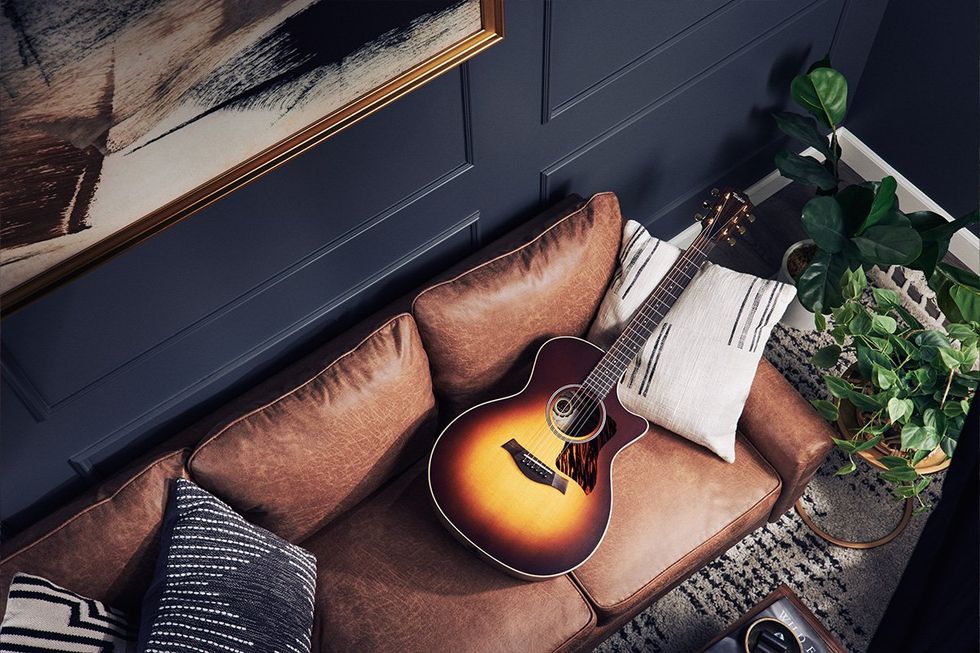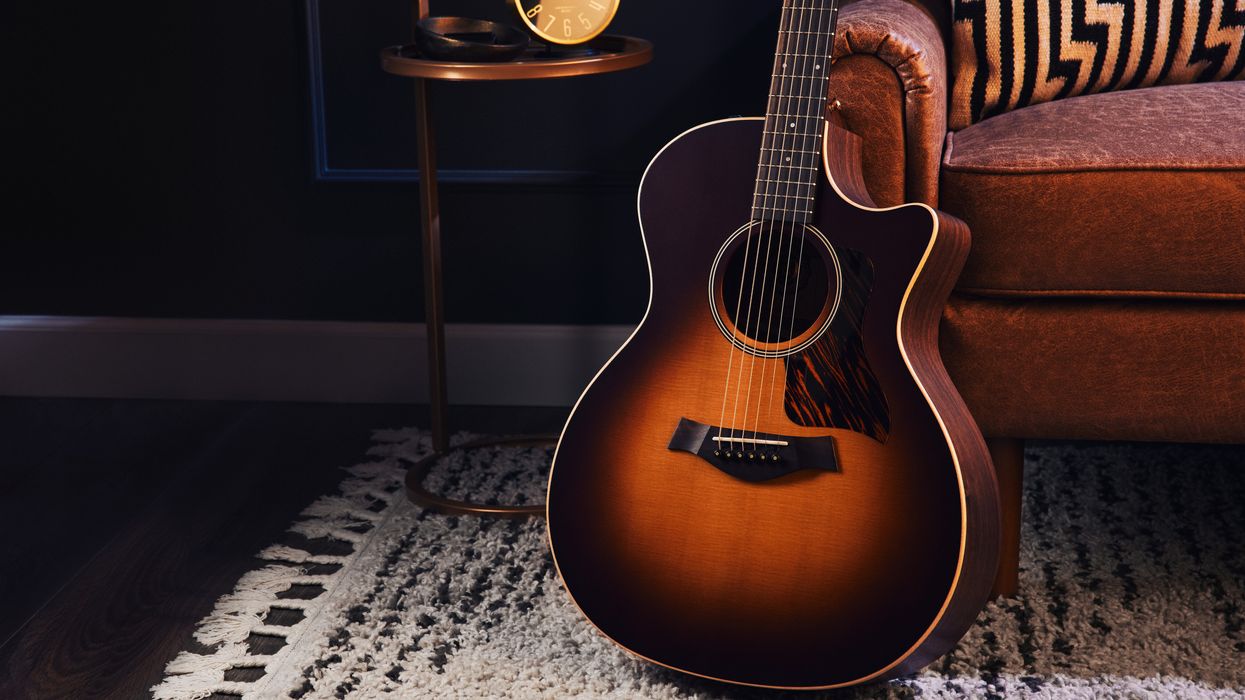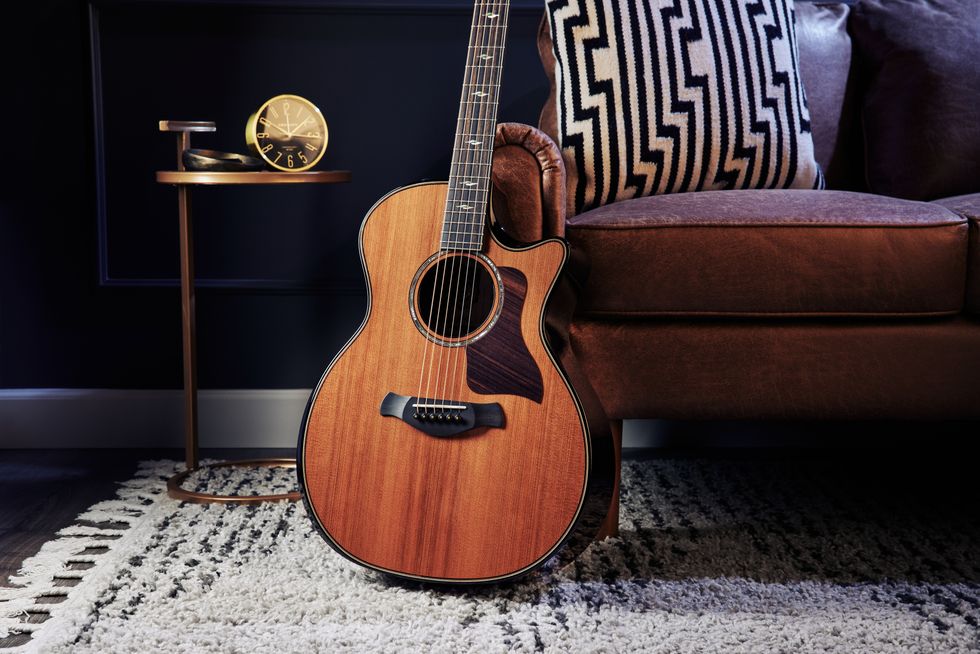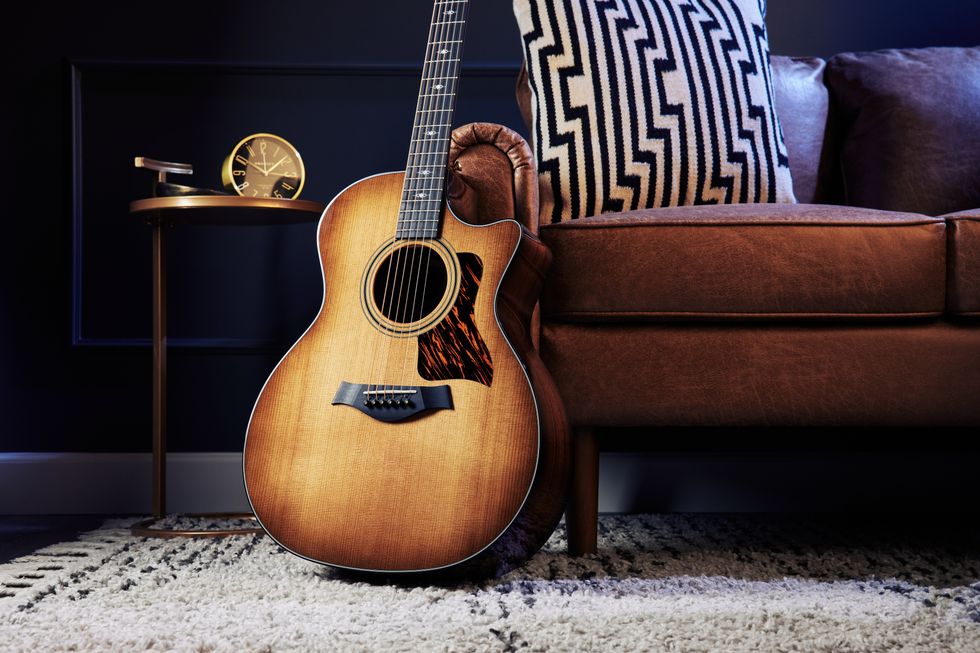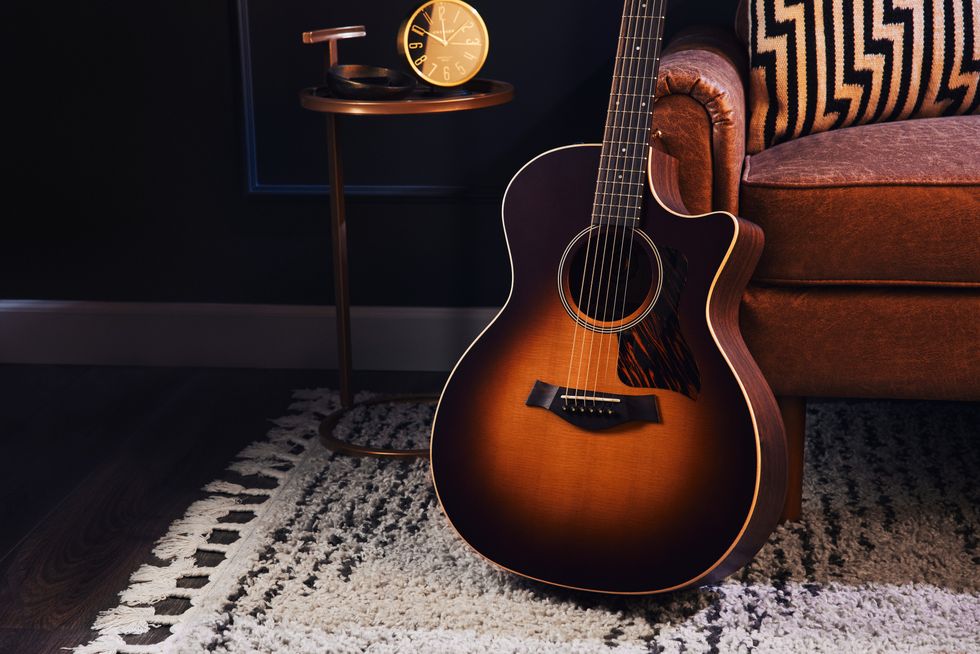The solo artist and leader of Asking Alexandria and We Are Harlot finds inspiration in an innovative new guitar that he calls “absolutely game changing.”
“I’m a big fan of old things,” says Danny Worsnop. “From cameras to guitars to microphones to cars, I like the stories they tell and the lives they’ve lived. I think old stuff has more soul.”
Best known as the lead vocalist of rock bands Asking Alexandria and We Are Harlot, British-born Worsnop has also released two solo albums that explore country and blues. He’s currently in the studio working on his third solo release.
With his love of vintage aesthetics and appreciation for instruments that age with character, he’s spent much of his life searching for a guitar that feels like home. “I’m always on the quest to find the perfect thing,” he says.
For years, Taylor’s GS Mini-e Koa Plus has been his go-to songwriting companion. “I don’t need a bunch of things to do the job,” he explains. “This guitar was the first one that did that, and it’s been with me for years. The finish is beat up. It’s got shiny spots from the sweat on my arm. This has been my daily driver and workhorse and life partner since I got it. It’s more than a guitar. It has a life and a personality and a sound. You pick up any other GS Mini-e Koa Plus in the world, it doesn't sound like this one.”
With his love of older things, Worsnop acknowledges the challenges of making a deep connection with an out-of-the-box acoustic. “All the nice, shiny new guitars that anyone has sent me over the years are great—I have fun with them,” he says. “But I've never loved them. I find it hard to love new stuff because it kind of doesn't have a life or personality yet.”
Worsnop’s done his best to infuse them with some of his own personality by tweaking them in different ways–chasing a specific feel and sound that makes a guitar feel more like an extension of himself rather than just another utilitarian tool. But his most recent acoustic arrival was different.
“It’s more than a guitar. It has a life and a personality and a sound.”
Striking Gold
Worsnop recently got his hands on Taylor Guitars’ new Gold Label 814e, designed by Andy Powers, the creative visionary behind many of Taylor’s guitar innovations since 2011. For Taylor’s new Gold Label Collection, Powers drew inspiration from the sound of flattop acoustics from the 1930s and 1940s.
Worsnop was immediately drawn to the Gold Label 814e’s vintage-inspired visual aesthetic—influenced by old banjos and mandolins, early Taylor designs, and Powers’ pre-Taylor archtop guitars. But the true revelation came when he played it.
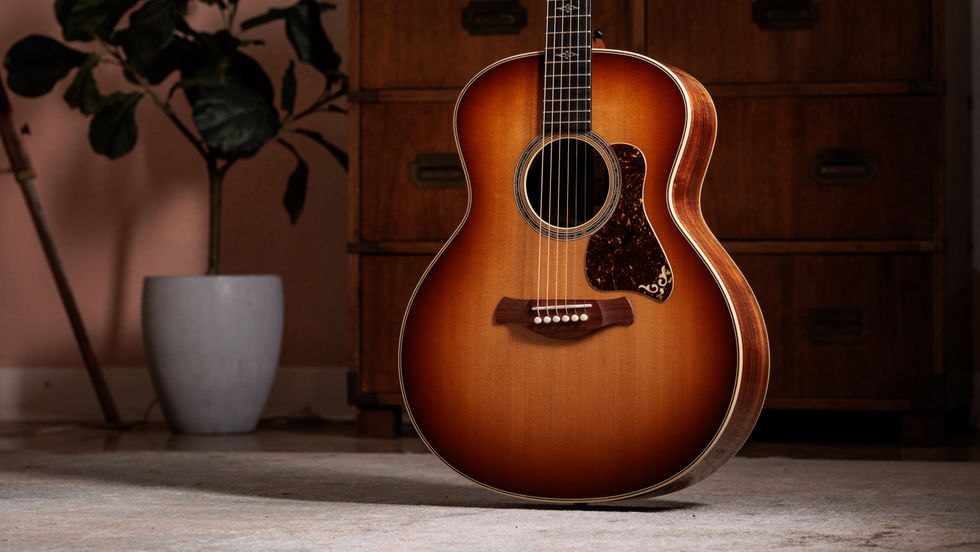
“When I saw this guitar... I mean, it looks super cool, like an older guitar,” he says. “And the second I picked it up, it was different. It was like, this plays like a guitar that is so old and has stories and songs in it already. I fell in love with it.”
Worsnop says that with other Taylors he has owned, including his GS Mini-e Koa Plus, he would often modify them in some way to give them a more vintage sensibility. But not with the Gold Label.
One of the defining features of the Gold Label 814e is its new Super Auditorium body shape. The non-cutaway body bears a clear family resemblance to Taylor’s popular Grand Auditorium, but the Super Auditorium is slightly longer and wider at the lower bout, with a slightly shallower depth. The new body dimensions, combined with Andy’s version of a long-tenon neck and his new fanned V-Class bracing pattern, are all key ingredients in a new sonic recipe that defines the sound of Taylor’s Gold Label collection. The result is a warm, old-heritage voice that’s unlike anything Taylor has ever produced.

Worsnop says the guitar complements him musically because it supports his dynamic vocals with extraordinary volume and responsiveness to a lighter touch.
“Because I sing loud, having something that’s loud enough, but not so loud that when I do drop down you can’t hear me anymore, is important for me,” he explains.
The Gold Label 814e comes with back and sides of solid Honduran rosewood or solid Hawaiian koa (Worsnop has the Honduran rosewood model) paired with a torrefied Sitka spruce soundboard. Each model is available with a natural or sunburst top.
The Revolutionary Action Control Neck™
One of the standout features of the Gold Label 814e is Taylor’s patented new Action Control Neck™, an innovative neck joint design that allows for quick, easy, and precise neck angle adjustments. It marks another step forward from the patented, micro-adjustable design Bob Taylor introduced back in 1999. Unlike traditional neck resets, this system, like Bob’s, is also glue-less, and in this case enables effortless fine-tuning on the fly without having to remove the neck or even the strings, and without the use of shims. By simply using a 1/4" nut driver (or standard truss rod wrench) on a nut in the neck block (accessible through the soundhole), a player can raise or lower the action to dial in an ideal setup.
“It is a massive deal,” says Worsnop. “When it comes to traveling musicians, it’s absolutely game changing. This allows you to do a micro-adjustment without having to get in the car and drive. When I’m in the studio, I like having that precision to be able to make it just perfect.”
For professional musicians, service techs, and recreational players who want to quickly fine-tune their action, the innovative neck design marks a paradigm shift.
In Studio and Onstage
In his Tennessee home, Worsnop has an upstairs studio where he records most of his music. It’s where he’s tested countless guitars, searching for the right fit. Though his trusty songwriting guitar has been the aforementioned GS Mini-e Koa Plus—perfect for capturing spontaneous new ideas—when it comes to recording, the Gold Label 814e has taken center stage.
“I’m working on the new album right now,” he shares. “If I’m at home and I’m just wandering around downstairs, which is usually where and how writing happens, [the GS Mini] is the guitar I’m walking around with. And then as soon as there’s an idea, I’ll go upstairs, and it’s the Gold Label. Honestly, I don’t play anything else up there now. I put the album recording on hold for this guitar. It’s the only guitar on the album.”
And it won’t just live in the studio. Worsnop plans to bring the Gold Label 814e on tour, making it his primary acoustic guitar for live performances.
Performance Highlight: "Ain't No Use"
In a recently recorded performance of his song “Ain’t No Use”, Worsnop showcases why the Gold Label 814e is such a great fit for him. The song, rich with storytelling and emotional depth, aligns well with the guitar’s vintage aesthetic and warm tonal character. It explores the universal tension between who we are and who we want to be, while emphasizing the transformative power of acceptance despite imperfections. The guitar’s deep, open sound and full-bodied, muscular tone are a perfect complement to Worsnop’s soaring, soulful vocals, amplifying the expressiveness of his performance and highlighting a symbiosis between player and instrument. A video of the performance is featured at the top of this article.
For Worsnop, the Gold Label 814e represents the culmination of years of searching, experimenting and refining his sound. It’s an instrument that feels like it has lived a life, carrying with it the soul and character he always craved in an acoustic.
“I have played music since I was 6 years old, and I’ve spent my entire life looking for my instrument,” he reflects. “At 34, I’ve found it.”
